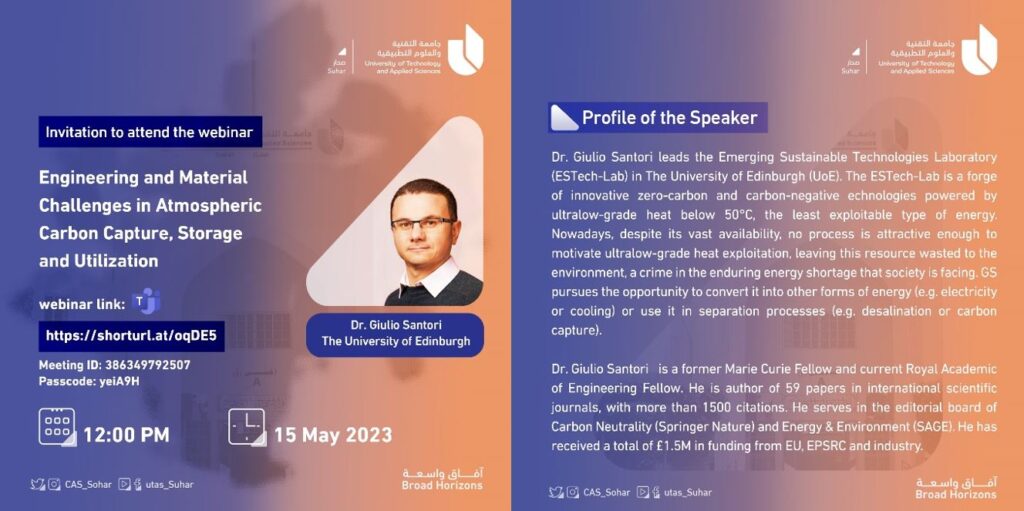The SolDAC project partners meet the University of Technology and Applied Sciences (UTAS), one of the most lively and fast-growing higher education institutions in Oman. UTAS is partnering with The University of Edinburgh (Dr Giulio Santori laboratory, ESTech-Lab), for establishing its first Carbon Capture research laboratory. About 30 people met online to know the advances on Carbon Capture, Storage and Utilisation from the SolDAC project and pave the way for long term collaboration.
The keynote from Dr Santori, titled “Engineering and Material Challenges in Atmospheric Carbon Capture, Storage and Utilization”, covered the impact of the Direct Air Capture industry in the energy system either when carbon dioxide ends with storage in geological reservoirs or when it is converted to chemicals. After reviewing the technologies available for carbon capture, including those from SolDAC, the focus moved to the challenges in the production of renewable Ethylene and how SolDAC is addressing them.
The take-away messages from the keynote are:
1) DACis not only REMOVAL, it implies PURIFICATION and compression(when in DAC+Storage);
2) Primary Energy is the main drawback: rigorous thermodynamics suggests ~1 order of magnitude larger than the minimum separation work -> 2nd Law efficiencies <10%(amine from concentrated streams range 20%-25%);
3) DAC+Storage and DAC+Utilisation are going to absorb a significant share of the global renewable energy
Lower energy per-capita future or alternative energy sources;
We need of super-efficient DAC technologies.
4) DAC will allow to restore the natural CO2 concentration in the atmosphere on a time-scale of centuries (energy limited). We need to deal with climate change for generations;
5) DAC+Storage and DAC+Utilisation have different specifications;
6) All products from DAC+Utilisation are going to be high-price;
7) Research on sustainable sorption materialsis still very open and key to enable DAC.
